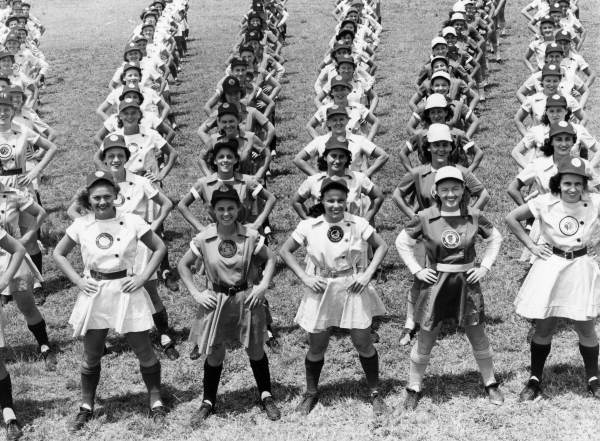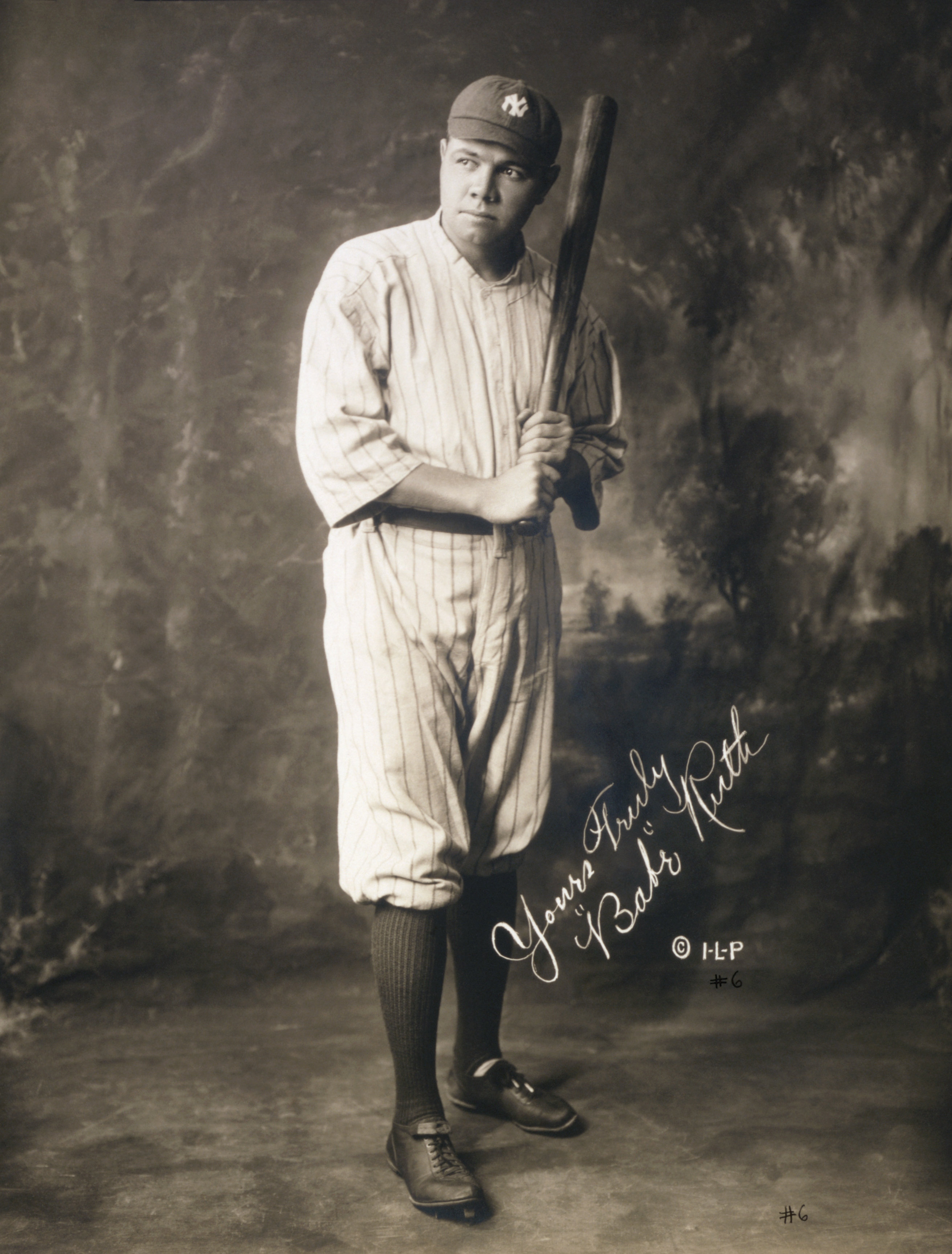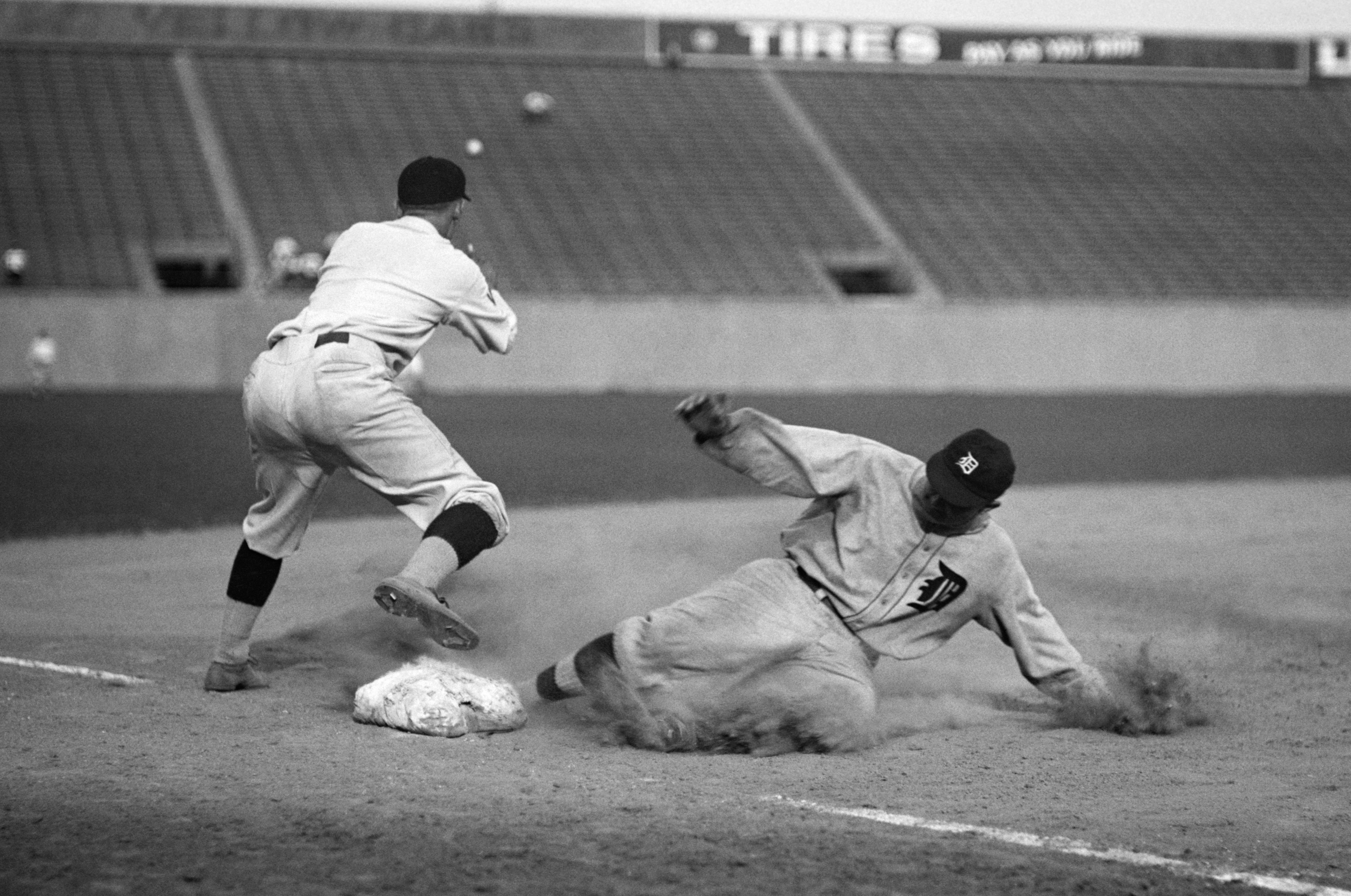|
Beverly Hatzell
Beverly Hatzell (later Volkert; February 19, 1929 – August 28, 2005) was an American pitcher for the All-American Girls Professional Baseball League between 1949 and 1951. She both batted and threw right-handed.Beverly Volkert – Profile/Obituary ''''; retrieved 2019-04-14. Born in , Beverly was the second of five children born to Gerald and Velma Hatzell. She played for four teams of the |
All-American Girls Professional Baseball League
The All-American Girls Professional Baseball League (AAGPBL) was a professional women's baseball league founded by Philip K. Wrigley which existed from 1943 to 1954. The AAGPBL is the forerunner of women's professional league sports in the United States. Over 600 women played in the league, which consisted of eventually 10 teams located in the American Midwest. In 1948, league attendance peaked at over 900,000 spectators. The most successful team, the Rockford Peaches, won a league-best four championships. The 1992 film ''A League of Their Own'' is a mostly fictionalized account of the early days of the league and its stars. Founding and play With the entry of the United States into World War II, several major league baseball executives started a new professional league with women players in order to maintain baseball in the public eye while the majority of able men were away. The founders included Philip K. Wrigley, Branch Rickey, and Paul V. Harper. They feared that Ma ... [...More Info...] [...Related Items...] OR: [Wikipedia] [Google] [Baidu] |
Win–loss Record (pitching)
In baseball and softball, a win–loss record (also referred to simply as a record) indicates the number of wins (denoted "W") and losses (denoted "L") credited to a pitcher. For example, a 20–10 win–loss record would represent 20 wins and 10 losses. In each game, one pitcher on the winning team is awarded a win (the "winning pitcher") and one pitcher on the losing team is given a loss (the "losing pitcher") in their respective statistics. These pitchers are collectively known as the ''pitchers of record''. The designation of win or loss for a pitcher is known as a ''decision'', and only one pitcher for each team receives a decision. A starting pitcher who does not receive credit for a win or loss is said to have ''no decision''. In certain situations, another pitcher on the winning team who pitched in relief of the winning pitcher can be credited with a save, and holds can be awarded to relief pitchers on both sides, but these are never awarded to the pitcher who is awarde ... [...More Info...] [...Related Items...] OR: [Wikipedia] [Google] [Baidu] |
On-base Plus Slugging
On-base plus slugging (OPS) is a sabermetric baseball statistic calculated as the sum of a player's on-base percentage and slugging percentage. The ability of a player both to get on base and to hit for power, two important offensive skills, are represented. An OPS of .800 or higher in Major League Baseball puts the player in the upper echelon of hitters. Typically, the league leader in OPS will score near, and sometimes above, the 1.000 mark. Equation The basic equation is OPS = OBP + SLG \, where OBP is on-base percentage and SLG is slugging average. These averages are defined below as: OBP = \frac - the numerator "H + BB +HBP" effectively means "number of trips to first base at least" - the denominator "AB + BB + SF + HBP" effectively means "total plate appearances", but does not include sacrifice bunts This is because though a batter makes a trip to the plate he is not given an "AB" when he walks (BB or HBP) or when he hits the ball into play and is called out, but the ... [...More Info...] [...Related Items...] OR: [Wikipedia] [Google] [Baidu] |
Slugging Average
In baseball statistics, slugging percentage (SLG) is a measure of the batting productivity of a hitter. It is calculated as total bases divided by at bats, through the following formula, where ''AB'' is the number of at bats for a given player, and ''1B'', ''2B'', ''3B'', and ''HR'' are the number of singles, doubles, triples, and home runs, respectively: : \mathrm = \frac Unlike batting average, slugging percentage gives more weight to extra-base hits such as doubles and home runs, relative to singles. Plate appearances resulting in walks, hit-by-pitches, catcher's interference, and sacrifice bunts or flies are specifically excluded from this calculation, as such an appearance is not counted as an at bat (these are not factored into batting average either). The name is a misnomer, as the statistic is not a percentage but an average of how many bases a player achieves per at bat. It is a scale of measure whose computed value is a number from 0 to 4. This might not be readi ... [...More Info...] [...Related Items...] OR: [Wikipedia] [Google] [Baidu] |
On-base Percentage
In baseball statistics, on-base percentage (OBP) measures how frequently a batter reaches base. An official Major League Baseball (MLB) statistic since 1984, it is sometimes referred to as on-base average (OBA), as it is rarely presented as a true percentage. Generally defined as "how frequently a batter reaches base per plate appearance", OBP is specifically calculated as the ratio of a batter's times on base (the sum of hits, bases on balls, and times hit by pitch) to the sum of at bats, bases on balls, hit by pitch, and sacrifice flies. OBP does not credit the batter for reaching base on fielding errors, fielder's choice, uncaught third strikes, fielder's obstruction, or catcher's interference. OBP is added to slugging average (SLG) to determine on-base plus slugging (OPS). The OBP of all batters faced by one pitcher or team is referred to as "on-base against". On-base percentage is calculable for professional teams dating back to the first year of National Associ ... [...More Info...] [...Related Items...] OR: [Wikipedia] [Google] [Baidu] |
Batting Average (baseball)
In baseball, batting average (BA) is determined by dividing a player's hits by their total at-bats. It is usually rounded to three decimal places and read without the decimal: A player with a batting average of .300 is "batting three-hundred". If necessary to break ties, batting averages could be taken beyond the .001 measurement. In this context, .001 is considered a "point", such that a .235 batter is 5 points higher than a .230 batter. History Henry Chadwick, an English statistician raised on cricket, was an influential figure in the early history of baseball. In the late 19th century he adapted the concept behind the cricket batting average to devise a similar statistic for baseball. Rather than simply copy cricket's formulation of runs scored divided by outs, he realized that hits divided by at bats would provide a better measure of individual batting ability. This is because while in cricket, scoring runs is almost entirely dependent on one's batting skill, in baseball ... [...More Info...] [...Related Items...] OR: [Wikipedia] [Google] [Baidu] |
Total Bases
In baseball statistics, total bases is the number of bases a player gains with hits. It is a weighted sum with values of 1 for a single, 2 for a double, 3 for a triple and 4 for a home run. For example, three singles is three total bases, while a double and a home run is six total bases. Only bases attained from hits count toward this total. Reaching base by other means (such as a base on balls) or advancing further after the hit (such as when a subsequent batter gets a hit) does not increase the player's total bases. In box scores and other statistical summaries, total bases is often denoted by the abbreviation TB. The total bases divided by the number of at bats is the player's slugging percentage. Records Hank Aaron's 6,856 career total bases make him the all-time MLB record holder. Having spent the majority of his career playing in the National League, he also holds that league's record with 6,591 total bases. Aaron hit for 300 or more total bases in a record 15 differ ... [...More Info...] [...Related Items...] OR: [Wikipedia] [Google] [Baidu] |
Stolen Base
In baseball, a stolen base occurs when a runner advances to a base to which they are not entitled and the official scorer rules that the advance should be credited to the action of the runner. The umpires determine whether the runner is safe or out at the next base, but the official scorer rules on the question of credit or blame for the advance under Rule 10 (Rules of Scoring) of the MLB's Official Rules. A stolen base most often occurs when a base runner advances to the next base while the pitcher is pitching the ball to home plate. Successful base stealers are not only fast but have good base-running instincts and timing. Background Ned Cuthbert, playing for the Philadelphia Keystones in either 1863 or 1865, was the first player to steal a base in a baseball game, although the term ''stolen base'' was not used until 1870. For a time in the 19th century, stolen bases were credited when a baserunner reached an extra base on a base hit from another player. For example, if a ru ... [...More Info...] [...Related Items...] OR: [Wikipedia] [Google] [Baidu] |
Run Batted In
A run batted in (RBI; plural RBIs ) is a statistic in baseball and softball that credits a batter for making a play that allows a run to be scored (except in certain situations such as when an error is made on the play). For example, if the batter bats a base hit which allows a teammate on a higher base to reach home and so score a run, then the batter gets credited with an RBI. Before the 1920 Major League Baseball season, runs batted in were not an official baseball statistic. Nevertheless, the RBI statistic was tabulated—unofficially—from 1907 through 1919 by baseball writer Ernie Lanigan, according to the Society for American Baseball Research. Common nicknames for an RBI include "ribby" (or "ribbie"), "rib", and "ribeye". The plural of "RBI" is a matter of "(very) minor controversy" for baseball fans:; it is usually "RBIs", in accordance with the usual practice for pluralizing initialisms in English; however, some sources use "RBI" as the plural, on the basis that i ... [...More Info...] [...Related Items...] OR: [Wikipedia] [Google] [Baidu] |
Home Run
In baseball, a home run (abbreviated HR) is scored when the ball is hit in such a way that the batter is able to circle the bases and reach home plate safely in one play without any errors being committed by the defensive team. A home run is usually achieved by hitting the ball over the outfield fence between the foul poles (or hitting either foul pole) without the ball touching the field. Far less common is the "inside-the-park" home run where the batter reaches home safely while the baseball is in play on the field. When a home run is scored, the batter is credited with a hit and a run scored, and a run batted in ( RBI) for each runner that scores, including himself. Likewise, the pitcher is recorded as having given up a hit and a run, with additional runs charged for each runner that scores other than the batter. Home runs are among the most popular aspects of baseball and, as a result, prolific home run hitters are usually the most popular among fans and consequently th ... [...More Info...] [...Related Items...] OR: [Wikipedia] [Google] [Baidu] |
Triple (baseball)
In baseball, a triple is the act of a batter safely reaching third base after hitting the ball, with neither the benefit of a fielder's misplay (see error) nor another runner being put out on a fielder's choice. A triple is sometimes called a "three-bagger" or "three-base hit". For statistical and scorekeeping purposes it is denoted by 3B. Triples have become somewhat rare in Major League Baseball, less common than both the double and the home run. This is because it requires a ball to be hit solidly to a distant part of the field (ordinarily a line drive or fly ball near the foul line closest to right field), or the ball to take an irregular bounce in the outfield, usually against the wall, away from a fielder. It also requires the batter's team to have a good strategic reason for wanting the batter on third base, as a stand-up double is sufficient to put the batter in scoring position and there will often be little strategic advantage to risk being tagged out whilst tr ... [...More Info...] [...Related Items...] OR: [Wikipedia] [Google] [Baidu] |
Double (baseball)
In baseball, a double is the act of a batter striking the pitched ball and safely reaching second base without being called out by the umpire, without the benefit of a fielder's misplay (see error) or another runner being put out on a fielder's choice. A double is a type of hit (the others being the single, triple and home run) and is sometimes called a "two-bagger" or "two-base hit". For statistical and scorekeeping purposes it is denoted by 2B. Description Typically, a double is a well-hit ball into the outfield that finds the "gap" between the center fielder and one of the corner outfielders, bounces off the outfield wall and down into the field of play, or is hit up one of the two foul lines. To hit many doubles, a batter must have decent hitting skill and power; it also helps to run well enough to beat an outfield throw. Doubles typically drive in runs from third base, second base, and even from first base at times. When total bases and slugging percentages are ca ... [...More Info...] [...Related Items...] OR: [Wikipedia] [Google] [Baidu] |




.jpg)



